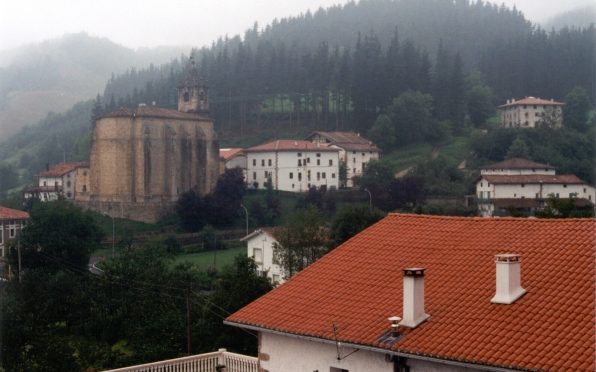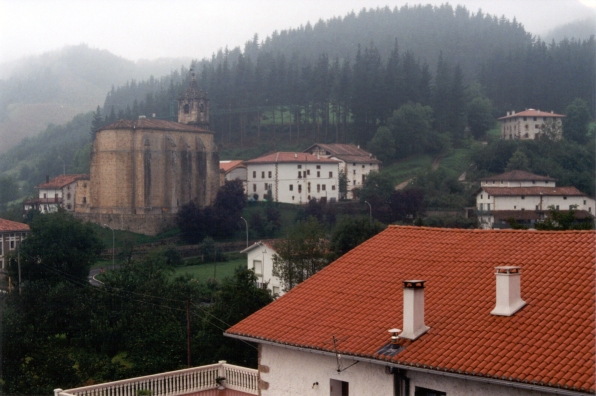Blas Antonio Telleria Goya, my great-grandfather and my namesake, was from Mutiloa, Gipuzkoa. His story is a bit shrouded in mystery – family lore says he was a merchant marine that jumped ship in Argentina and made his way north, but he also appears in the manifests on Ellis Island. In any case, we really have no connection to his past. I’ve been through Mutiloa a few times, trying to get some sense of the place that he came from. It is even smaller than my dad’s home town of Munitibar.
- The most widespread theory about the origin of the name of Mutiloa indicates it comes from mutil-ola, meaning “boy’s cabin.” While the Gipuzkoan village is never referred to as Mutilola historically, there is a town Mutiloa in Nafarroa that was in its past.
- The history of Mutiloa dates back to 1144 when Pedro, the abbot of the monastery of Iratxe in Nafarroa, essentially swapped the estate that the monastery had in Mutiloa with what Pedro Semenones de Góngora had in Azagra. In 1384, Mutiloa became part of Segura, though it separated again in 1615 when the town obtained the title of villa from King Felipe III.
- Like Munitibar, and maybe a lot of small towns not only in the Basque Country but perhaps around the world, the population of Mutiloa has declined over the last century. In 1900, the town had 517 inhabitants; in 2000, that had dropped to 165 people. In 1970, there were some 290 people living in Mutiloa, all but 2 families of which spoke Euskara.
- The local economy is primarily agrarian, though the region is also rich in iron and copper. In the 17th and 18th centuries, there was significant mining activity to tap these veins and, in 1986, La Troya mine received a large loan to extract iron and zinc ores, though the mine is now flooded and closed.
- That said, the area is recognizing and transforming its mining past by creating the Mutiloa Mining Preserve. While trying to recognize the importance of mining to the history of Mutiloa, they are transforming it into a flora and fauna preserve, with wetlands. They are restoring some of the key mining sites, with multiple routes for hiking through the preserve to explore both that history and nature.
- Mutiloa has two primary local festivals: they celebrate San Pedro on June 29 and the pilgrimage to the hermitage of Liernia on September 8. The Virgin of Lierni is considered a patron of fertility, prompting many to make the pilgrimage, asking for her intercession.
- In addition to the hermitage, another local attraction is the Errotatxo mill. Designated a Qualified Cultural Heritage Site, the mill dates back to at least 1890, when it was owned by Jose Blas Telleria of Mujika. The last owner was Jose Antonio Alustiza.
Primary sources: Arozamena Ayala, Ainhoa; Cendoya Echániz, Ignacio. MUTILOA. Auñamendi Encyclopedia. Available at: https://aunamendi.eusko-ikaskuntza.eus/en/mutiloa/ar-83595/
Discover more from Buber's Basque Page
Subscribe to get the latest posts sent to your email.




3 thoughts on “Basque Fact of the Week: Mutiloa”